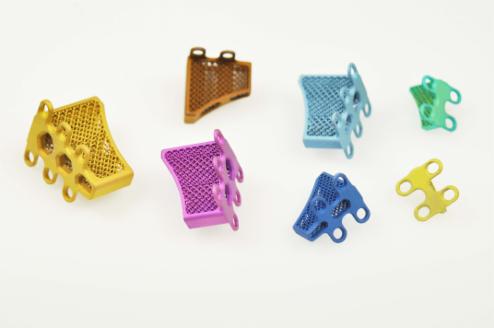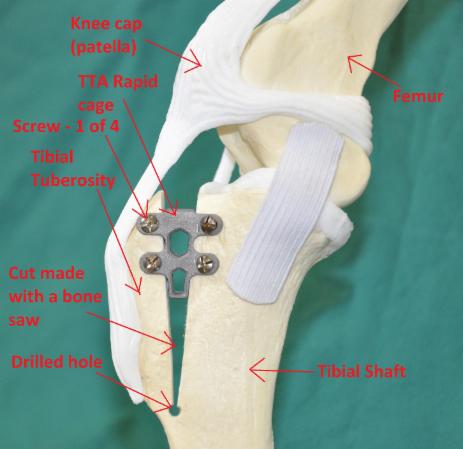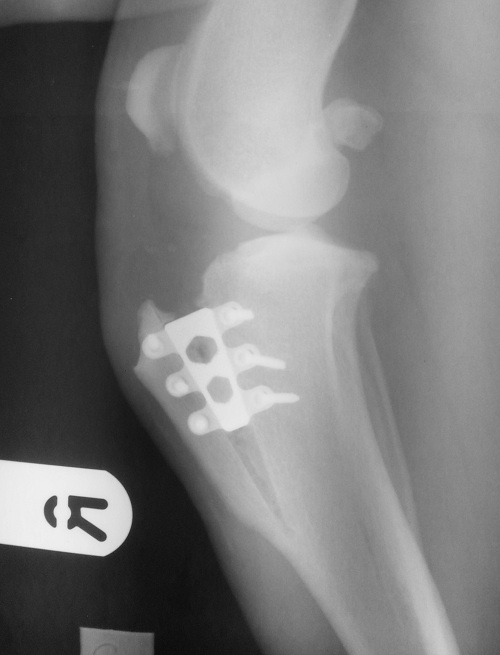TTA
Tibial Tuberosity Advancement (TTA) is a very effective and well established surgical technique used to manage cranial cruciate ligament disease. It typically allows a swift return to function.
TTA involves cutting the top of the tibia and advancing the tibial tuberosity forward in relation to the rest of the tibia. This geometric change influence the way the forces act through the stifle joint such that the joint is stable enough under load that the lack of cranial cruciate ligament is no longer such a clinical concern. Most patients go back to using the limb very well even just a few weeks after the surgery. This technique does not rely on artificial ligaments which commonly fail over time and is of variable clinical significance.
In the original TTA technique, the advancement of the tibial tuberosity is maintained with a titanium cage used as a spacer. A separate, specially designed plate is required to fully address all of the forces acting through this area. Additional dissection is required to position the plate properly which may increase healing times. Application of the plate also involves making a number of extra screw holes in the tibial tuberosity and the tibial shaft. The positioning of these holes will sometimes mean that they will act as significant stress risers which can then be implicated in fracture.
INTRODUCING TTA RAPID

a selection of TTA Rapid cages of different sizes
Recent advances in manufacturing have made it possible to combine the spacing cage and plate into a single device called a TTA Rapid cage. Like the original TTA cages, the TTA Rapid cages are also made of titanium. The cages are anatomically shaped and are designed for rapid incorporation into the healing bone. The very open structure allows for excellent blood vessel in-growth; permitting rapid new bone deposition throughout the honeycomb structure of the cage. The manufacturing process give a microscopically very rough surface which allows for bone to grow onto the metal very effectively as well, providing superior cage stability longer term. It is expected that the bone in-growth and on-growth contribute significantly to both the medium and the longer term strength of the procedure.
Despite the apparent complexity of the new cage design, the over-all principle is fairly simple. The TTA Rapid technique critically avoids screw hole placement in areas likely to weaken the bone significantly enough as to result in fracture. Bone holes and implants are not placed into into the areas most commonly associated with major complications such as tibial tuberosity fracture and tibial shaft fracture which can be very challenging to repair. Bone is significantly stronger in compression than in tension - TTA Rapid is very sympathetic to this too. It is still early days for the technique, but I would expect TTA Rapid to show a significant reduction in complication rates compared with any previous technique.

A TTA Rapid cage in a bone model
David has been involved in the development of the TTA Rapid techique and in helping to teach the technique in the UK.

Bone filling of the osteotomy gap just 5 weeks after TTAR in a Rotweiller